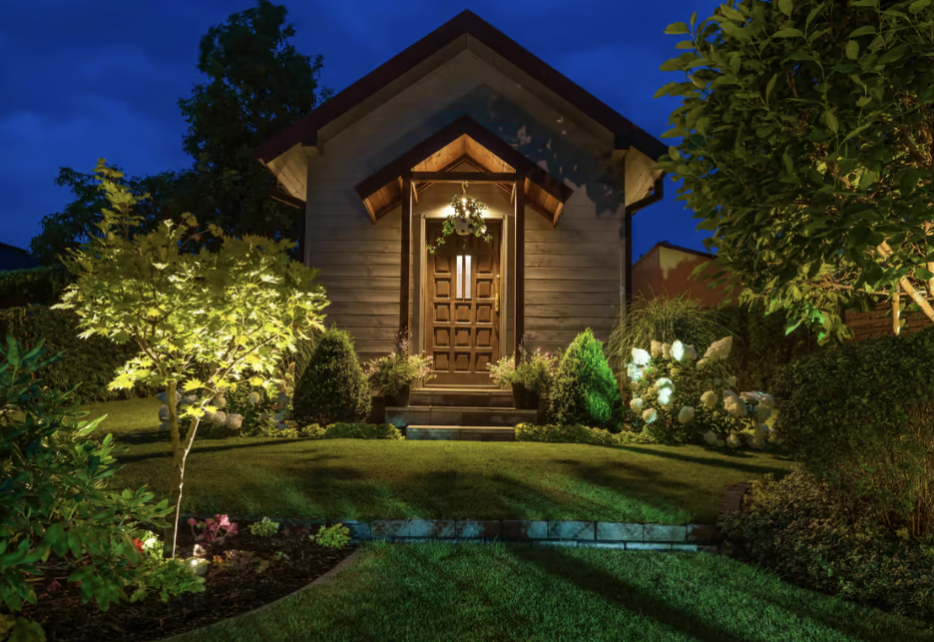Lowest Price Guaranteed Shop Now

1. What elements need to be lit in my landscape?
This question can only be answered when you determine the overall effect you want. What mood are you looking for? What function will the light serve? Think about the light’s function and then walk around your property and choose focal points. Do you have a beautiful garden? Elegant fountain? Whatever elements jump out at you; this is your starting point. Remember also to consider safety lighting on walkways, steps and driveways.
2. Which fixtures should I purchase?
Remember when choosing fixtures that less is more. Unless you want to spotlight one key feature, generally low-voltage or solar lighting will work well. Consider softer light emitted from different angles to create an overall desired effect. You can also create a brighter illumination by grouping softer lights together. Low-voltage and solar lighting will also save you money on electricity.
3. Why is low-voltage lighting preferred?
Low-voltage lighting works well in residential lighting environments and holds a safe 12V of electricity. Your current electrical capacity is 120V which poses a risk to the people living inside the home during inclement weather conditions. Aside from safety concerns, low-voltage lights are more efficient, saving you money, and the bulbs last long without needing much maintenance. Installation is also much easier.
4. What type of lighting techniques should I use?
There are hundreds of lighting techniques, but for the sake of simplicity, you only need to concern yourself with a few. Uplighting and downlighting refers to the direction of the light. For example, with downlighting place a fixture in an elevated location and point it downward to illuminate the area beneath it. These techniques add a soft, beautiful glow to any landscape design.
Flood and spot lights emit a bright glow to featured objects. Use these techniques sparingly and in key locations. Shadow lighting illuminates a surface in front of another surface. By lighting the front object, you cast a shadow on the object behind it. Path lighting illuminates paths and walkways for elegance and safety.
5. How do I plan my landscape design?
It is recommended to consult with a professional for this step. A landscape designer will study the layout of your property and the issues you may face in the process of executing your design.
If you are flying “solo”, sketch the property and include all the features you want to illuminate. Pay close attention to the power consoles and their locations. Draw a line from the fixtures to the consoles to display the cables. The process can get complicated around walkways, steps and driveways. If you feel uncomfortable, opt to speak to a professional or consider using solar lighting fixtures.
The landscape lighting design process can be difficult for novices. If you have any more questions, research the process in detail before you begin or hire a professional to design and install the lighting. Beginners may come across property issues they are not skilled enough to fix and cause unnecessary future damage.